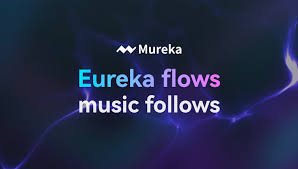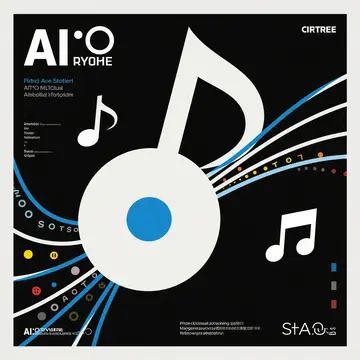Introduction: Using Prompts to Tap into the World’s Musical Heritage
Mureka AI has quickly become one of the most advanced AI music generators on the market—especially for users who want to create music grounded in global cultural styles. But to truly unlock its power, you need to know how to write effective prompts that reflect the sounds of diverse regions, instruments, and traditions.
Whether you're aiming for Indian classical sitar vibes, Afrobeat percussion, or Arabic maqam modes, the quality of your music starts with the prompt.
In this article, we’ll break down exactly how to write prompts for cultural music in Mureka, with real examples, syntax tips, and expert-level tricks to get authentic-sounding global tracks.

Why Prompt Writing Matters in Mureka
Mureka’s AI engine is prompt-driven. That means every nuance—tempo, emotion, instrument, and cultural style—is shaped by the way you phrase your input.
Great prompts:
Reflect genre-specific language
Mention traditional instruments
Specify emotional tone
Include regional context
Poor prompts like “make a world music beat” will yield vague results. But something like:
“slow tempo Middle Eastern song with oud, daf drum, and minor scale progression”
…can give you something far more emotionally and culturally resonant.
Key Elements of a Cultural Music Prompt in Mureka
1. Specify the Culture or Region
Be explicit: is it “West African percussion” or “South Indian Carnatic music”?
?? Example:
? “Balkan brass band in 7/8 time with trumpet and tapan”
? “Eastern European style”
2. Name Traditional Instruments
Mention native instruments to steer Mureka toward a more authentic sound.
| Region | Instruments to Use in Prompts |
|---|---|
| West Africa | Djembe, talking drum, balafon |
| Middle East | Oud, qanun, ney, darbuka |
| India | Sitar, tabla, tanpura, bansuri |
| Latin America | Cuatro, congas, marimba, charango |
| East Asia | Erhu, guzheng, taiko, shakuhachi |
?? Example:
“Uplifting Afrobeat with shekere, talking drum, and layered vocal chants”
3. Add Emotion or Purpose
Mureka responds well to emotional or functional context (e.g., festival, meditation, protest, lullaby).
?? Example:
“Spiritual Indian flute meditation with tanpura drone and slow tempo”
4. Mention Tempo and Rhythm
Cultural genres often use specific rhythms or time signatures. Add them to the prompt.
?? Example:
“Bulgarian folk with 11/8 rhythm, gaida and female vocal harmonies”
Prompt Writing Templates for Cultural Music in Mureka
Here are some reusable prompt templates across different world genres:
?? African Groove Prompt
“Fast-paced Afrobeat in 6/8 with djembe, shekere, and horn stabs, joyful and energetic”
?? Middle Eastern Soundscape Prompt
“Slow Arabic instrumental using oud, darbuka, and maqam Hijaz scale, cinematic tone”
?? Indian Classical Prompt
“Traditional Hindustani raga Yaman with sitar, tabla, and tanpura backing drone, meditative mood”
?? Latin Folk Prompt
“Upbeat Andean music with pan flute, charango, and native drums, festival energy”
?? East Asian Ambient Prompt
“Calm Japanese ambient with koto, shakuhachi, and rain background, perfect for meditation apps”
Tips for Better Results in Mureka
? Use Descriptive Adjectives
Words like “melancholic,” “uplifting,” or “spiritual” influence harmony and instrumentation.
? Include Scale or Mode
Mentioning “Phrygian mode” or “Raga Bhairavi” helps shape melodic structure.
? Combine Genres Carefully
If blending (e.g., Afro-Cuban + jazz), mention core instruments and shared rhythms.
?? Example:
“Afro-Cuban jazz fusion with congas, trumpet, and 4/4 swing rhythm”
? Test, Refine, Repeat
AI outputs may vary, so iterate your prompt and adjust based on what you hear.
Real-World Use Cases: Mureka for Cultural Music Creation
?? Case 1: Documentary Score
A filmmaker used the prompt:
“Traditional Mongolian throat singing with horsehead fiddle and ambient pads for nature film”
? Mureka generated an authentic atmosphere that perfectly matched the tone of the documentary.
?? Case 2: Meditation App
A developer needed calming Indian ragas. Prompt:
“Peaceful Indian flute raga in Bhairav scale with tanpura and soft bells”
? Mureka delivered a beautifully textured 90-second loop used across app playlists.
?? Case 3: Global DJ Track
A producer blended Afrobeat with Brazilian funk using:
“Percussive Afro-Brazilian fusion with atabaque, agog?, and funky bassline”
? Created a danceable club-ready track in under 3 minutes.
Pros of Using Prompts for Cultural Music in Mureka
? Supports nuanced, culturally sensitive soundscapes
? Gives creators global reach without hiring live musicians
? Enhances storytelling with tailored emotional tones
? Enables multilingual, multicultural music content creation
Conclusion: Prompts Are the Passport to Global Sound in Mureka
If you want to create culturally grounded music with Mureka, writing the right prompt is everything. From regional instrumentation to rhythmic signatures and emotional cues, the better your input, the more authentic and resonant your music will sound.
Generative AI can’t replace centuries of tradition—but with smart prompt writing, it can help you tap into the spirit of global music in seconds.
So next time you need a Cuban son groove, a Persian lullaby, or a West African call-and-response rhythm—just prompt it, precisely.
FAQs
Can Mureka really replicate traditional music accurately?
To a strong degree—yes. While it's not perfect, well-written prompts using cultural instruments and modes can yield highly convincing results.
Can I use these AI-generated tracks commercially?
Yes, depending on Mureka’s licensing terms. Always check their latest commercial usage policy.
What if I want a fusion of two cultures?
Just combine both styles in the prompt and mention key instruments. For example:
“Bollywood meets reggaeton with tabla, Latin drums, and electronic bass”
Do I need music theory knowledge to write good prompts?
Not necessarily. Just knowing instruments, moods, and rhythms from a culture can be enough.
Learn more about AI MUSIC



